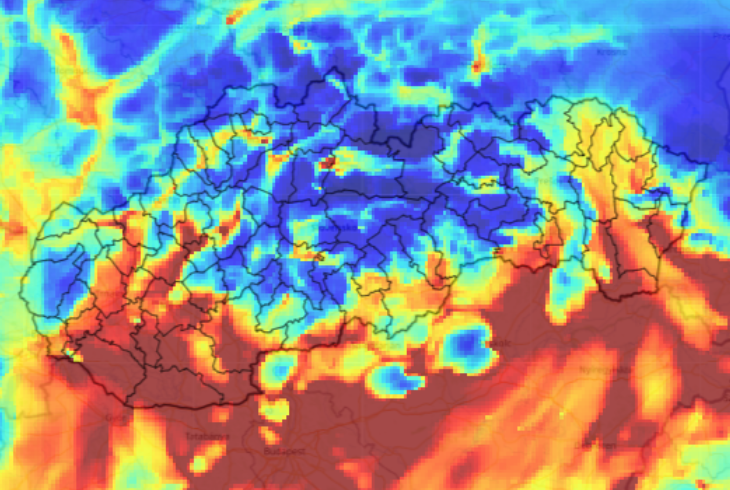

New
Air quality forecasts
17. 01. 2025
![]() Air
Air
The Slovak Hydrometeorological Institute informs about the air quality forecasting service. The data is available through the CAMS (Copernicus Atmosphere Monitoring Service). The forecast products also include forecasts of natural dust concentrations. This is mostly dust from deserts or semi-deserts - in Slovakia it is the most frequently occurring "Saharan dust".

Air quality forecasts are mainly used to determine the trend of pollutant concentrations, whether it is an improvement or deterioration of air quality, to determine the expected dispersion conditions and the direction of spread of pollutants. Uncertainty in the forecasts is introduced by the emission sources themselves and the uncertainty of the predicted meteorological fields, in particular precipitation and temperature stratification of the atmosphere, which determines the stability and therefore the dispersion conditions of the atmosphere.
Advantages, disadvantages
The advantage of the CMAQ model is the more detailed horizontal resolution of 2 km compared to the 8 km resolution of the CAMS model. On the other hand, the EU CAMS forecast is based on the median of the forecasts of 11 state-of-the-art numerical air quality models developed in Europe, which eliminates systematic and random errors of individual models.
Desert dust
The transfer of natural dust occurs under specific meteorological conditions that allow dust particles to rise from a height of several meters to several thousand meters above the earth's surface. Their subsequent horizontal transfer can reach a distance of several thousand kilometers. It is interesting to follow the movement of dust at different altitudes on forecast maps. In recent years, episodes of Saharan dust transfer have been more frequent than in the past.
Why monitor air quality information?
Air quality refers to the dispersion of pollutants in the outdoor air. In Slovakia, the Slovak Hydrometeorological Institute monitors pollutants. Forecasts can be helpful in predicting deteriorated or poor air quality. When high concentrations of pollutants in the air persist, we speak of so-called smog situations. From the point of view of health protection, it is necessary to respond adequately to the situation and follow recommendations, especially with regard to sensitive population groups, i.e. seniors, chronically ill people, pregnant women and, last but not least, children.
The current state and weather forecasts still have a place in our daily lives. Based on weather information, we adjust our activities, plans, choice of means of transport, type of clothing. We should also choose a similar approach to information about air quality. Be informed, react to changes, especially in times of increased concentrations of pollutants, and contribute to air protection. For example, in the area of household heating by adhering to the principles of proper heating and in the interest of sustainable transport by choosing a means of transport.
Air quality forecasts are available thanks to the National Collaboration Programme – Slovakia project, which is funded by the European Union through the Copernicus Earth Observation Programme and its CAMS atmospheric monitoring service, which is implemented by the European Centre for Medium-Range Weather Forecasts ECMWF.
More information can be found at: https://www.shmu.sk/sk/?page=1&id=oko_predpovede_produkty
You can monitor the current state of air quality on the web application www.dnesdycham.sk











